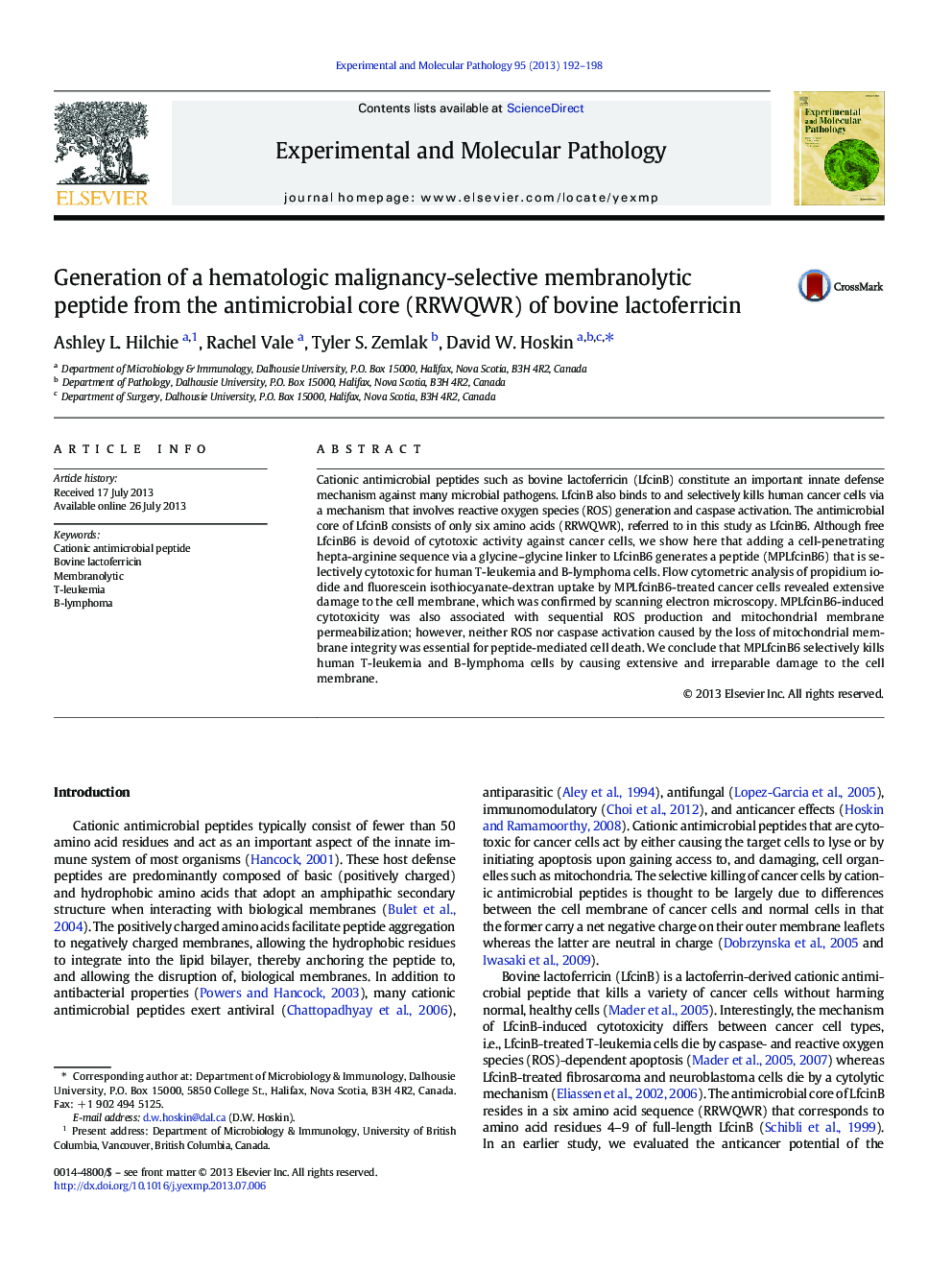| Article ID | Journal | Published Year | Pages | File Type |
|---|---|---|---|---|
| 2775347 | Experimental and Molecular Pathology | 2013 | 7 Pages |
•MPLfcinB6 consists of bovine lactoferricin's antimicrobial core linked to a R7 domain.•MPLfcinB6 is selectively cytotoxic for T-leukemia and B-lymphoma cells.•MPLFcinB6 is membranolytic.•MPLFcinB6 causes reactive oxygen species-dependent mitochondrial membrane damage.
Cationic antimicrobial peptides such as bovine lactoferricin (LfcinB) constitute an important innate defense mechanism against many microbial pathogens. LfcinB also binds to and selectively kills human cancer cells via a mechanism that involves reactive oxygen species (ROS) generation and caspase activation. The antimicrobial core of LfcinB consists of only six amino acids (RRWQWR), referred to in this study as LfcinB6. Although free LfcinB6 is devoid of cytotoxic activity against cancer cells, we show here that adding a cell-penetrating hepta-arginine sequence via a glycine–glycine linker to LfcinB6 generates a peptide (MPLfcinB6) that is selectively cytotoxic for human T-leukemia and B-lymphoma cells. Flow cytometric analysis of propidium iodide and fluorescein isothiocyanate-dextran uptake by MPLfcinB6-treated cancer cells revealed extensive damage to the cell membrane, which was confirmed by scanning electron microscopy. MPLfcinB6-induced cytotoxicity was also associated with sequential ROS production and mitochondrial membrane permeabilization; however, neither ROS nor caspase activation caused by the loss of mitochondrial membrane integrity was essential for peptide-mediated cell death. We conclude that MPLfcinB6 selectively kills human T-leukemia and B-lymphoma cells by causing extensive and irreparable damage to the cell membrane.
